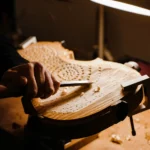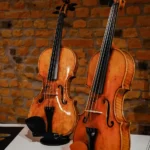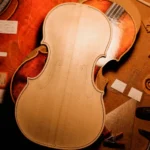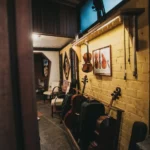4 Violin Makers from the Venetian School to Know
Back to BlogThe art of violin making was originally introduced in Venice and gained popularity in the 16th century following the introduction of violin makers family members who migrated to Venice from the French province of Germany.
Cremona has been the most famous city for violin making due to the Amati Family and then later, Antonio Stradivari’s legacy, Cremona basically became the pole of the violin. The first luthiers worked in Cremona, Italy, in the 16th century. The Cremonese violin maker Andrea Amati established the so-called violin family, but many other families and independent makers also made instruments at the time.
However, Cremona is not the only one to own this prize there are many other places with incredible violin makers’ history.
Venice has its own history of violinmaking. The city’s culture of music lovers doesn’t translate into an educational system as it does in Cremona, and there is no official institution that carries on the traditions of local luthiers, despite its historical importance as a musical center.
While the instruments crafted by Cremona’s violin makers were often commissioned by royalty, those made in Venice were not. The mercantile city, where an instrument was always playing in every home—one writer remarked that there was never a moment of silence—was less concerned with the aristocracy than Cremona. In fact, the first great Venetian luthiers, Martinus Kaiser, and his son-in-law Matteo Goffriller made violins to order and according to price. Rich clients received instruments of the highest quality made of expensive wood and varnish, while instrumentalists with fewer funds received lower-quality materials.
The Venetian Violin Makers
Domenico Montagnana
This master of the Venetian School was one of the most acclaimed violin makers, particularly renowned for his cellos. He took over Goffriller’s legacy and followed his work to achieve great results.
He moved to Venice at only fifteen years old to live with his brothers; one of them was a shoemaker just like their dad was. He probably learned the art of violin making in Sella’s shop, around the neighborhood he lived in.
By 1712 he established himself as a violin maker and opened his own workshop – however, his instruments from that year until 1720 are somewhat rare due to the lack of clear labels and the uncertainty about his earlier works’ appearance.
It is easy to imagine that without Pietro Guarneri’s arrival in Venice, which provoked the city’s violin makers to follow the Cremonese school and led to a stylistic enrichment, Domenico Montagnana might not have been able to develop his own remarkable style as we know it today.
Martinus Kaiser
In 1675, he began making violins. As a result of the compositions of Venetian composers such as Vivaldi, there was a growing demand for instruments that could be played with a bow.
Once Kaiser was gone, the most famous maker in Venice emerged: Matteo Goffriller. Goffriller married Kaiser’s daughter, although it is unclear whether he learned the trade from Kaiser or whether he arrived in Venice already trained. Like his father-in-law before him, Goffriller made violins to order—if the customer was rich, he used high-quality wood and varnish, and if they were poor, he used lower-quality materials. He also made his instruments to order in terms of size. Goffriller’s business was very successful, and his instruments are prized by professionals and soloists.
Matteo Goffriller
Considered one of the founders of the classical Venetian school, he created new stringed instruments from 1690 to 1715. His making was unique then, widely known for its innovation and high quality, which later influenced all Venetian violin makers.
He and his co-workers were able to supply and meet Venetian musicians’ demands, becoming the most prolific workshop at that time.
His instruments feature an expressive force and a great beauty, of which some have even been wrongly attributed to Stradivari in the past.
Francesco Gobetti
Gobetti was probably taught the craft of violin making at home. After moving to Venice in 1699, he worked as a shoemaker. There is no evidence that he was employed at any of the important violin shops in Venice, but he probably created instruments until 1720, despite a sharp drop-off in 1717 due to illness.
Gobetti’s instruments reflect the influence of Matteo Goffriller, who was prominent in Venice at the time. But they also contain elements of Jacob Stainer and Antonio Stradivari, among others. Some may have been sold by Matteo Sellas beginning in 1717 alongside the works of his contemporaries Carlo Tononi and Pietro Guarneri.
Did you enjoy it? Read about our Blog Top 10 Violin Makers of the 1700s here









